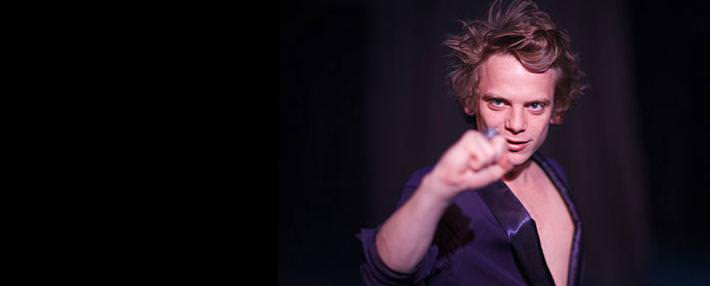Meisner’s Technique

Who was Sanford Meisner?
Sanford Meisner was the son of two Hungarian Jewish immigrants to America. He grew up studying music and was pulled out of the Damrosch Institute of Music, a former name for Julliard, by his father after the Great Depression fell across the U.S.A. The aspiring concert pianist often internalised playing the piano whilst in his father’s employment to keep him sane; this led to the acquisition of perfect pitch (this was sometimes associated to when he would drop his head in his hands to listen for the truth of someone’s acting in class). When Meisner turned 19 he heard that the Theatre Guild was hiring teenagers and found himself caught up in what acting could offer. Meisner saw this as the type of performance he had always dreamed of and pursued it professionally, much to his family’s dismay.
The Theatre Guild of Acting was noted for being a highly decorated company and pursued a training regime directed by the dramatic theorist Lee Strasberg, who adhered to preparation from the influence of Konstantin Stanislavski. Meisner went on to eventually reject the teachings of Strasberg, who wanted to use the personal exploration of memories to evoke emotional truths from the acting. Stanislavski, still alive at the time, was said to have believed this to be the last option for performers; wanting them instead to become emotionally available as the characters and experience their lives as they would.
After the guild was disbanded in 1940, Meisner taught at the Neighbourhood Playhouse and The Actors Studio (founded by two other members of the Guild) using his own technique - which continues to shape American Drama to this day.
The technique
The sole aim of this acting technique is for the actor to get out of his/her own head. Separate all your inner-feelings and emotions, the very life you lead, at the door, and engage in the character as an artist. Once detached, the actor is tasked with using other people on stage as their key focus to help bring out the artistic talent that is inevitably in their bones, as opposed to it being ‘all in the performers head.
The technique starts by building the foundation of an actor’s ability to disengage and then expanding into allowing a worthwhile performance; using different exercises, all accumulating to a professional standard. The key features are an ability to improvise, feeling genuine emotion from the given circumstances/inner objects and utilising all that in response to the scripted dialogue provided by an employer. With all these completed, the actor is then able to characterise themselves in line with their role, whilst at the same time also being able to analyse the script in a way that is helpful to the actor’s imagination in performance.
An example of an exercise directed by Meisner
Actors sit across from one another and have been given one line of dialogue to say. They would be given the same words, often involving how one character feels about the other. The line should be left open to interpretation, such as “I’m so happy with you right now.” They should vary in the way of expressing themselves in order to emphasise the subtext of what is implied with the line. Over-and-over, the actors should find new ways of understanding why the person is “happy” with the other person. The actors are allowed to move freely in their space, and the vocal/physical expression should make an audience member understand the subtext clearly.
The aim for the actor is to learn how to disassociate the words from what they first felt upon reading it with how the scene can manifest itself. Meisner wanted the actor to feel the scene, more so than reading it. If completed enough times and with enough vigour, the actor will be able to offer more to a scene than, perhaps, the playwright or director first thought upon writing/reading it. Otherwise, the actor is able to produce what the director is looking for more readily.
The power of imagination
The use of imagination is a wonderful way of expressing what an actor is trying to do. Acting and theatre is an artform, and to be truly great, an actor must allow his creativity to shine in a highly rigorous and technical profession. Vocal proficiency and core strength allow an actor to reproduce the work time after time, but the way an actor looks at the scene and interprets the words he’s given shows us something that can only be caught in glimpses – talent.
A quote from Sanford Meisner
Sanford Meisner understood that all the audience wanted to see was authenticity.
"To be an interesting actor – hell, to be an interesting human being – you must be authentic and for you to be authentic you must embrace who you really are, warts and all. Do you have any idea how liberating it is to not care what people think about you? Well, that's what we're here to do." — Sanford Meisner

